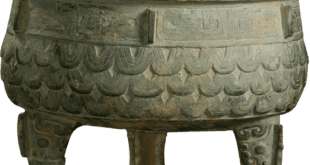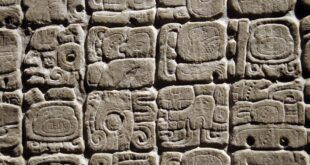The Best 30 Paleontological Fossils that Redefined Our Origins
From the depths of ancient history emerge the fossils that have reshaped our understanding of where we come from. These captivating remnants of long-gone creatures have provided crucial insights into the evolution of life on Earth. Let’s delve into the top 30 paleontological fossils that have transformed our perceptions of our origins.
1. Lucy (Australopithecus afarensis)
Lucy, the famous early human ancestor, provided groundbreaking evidence of bipedalism in hominins.
2. Tiktaalik (Transitional Fish-Tetrapod)
This fish-tetrapod hybrid showcased the transition from water to land in vertebrate evolution.
3. Archaeopteryx (Transitional Bird-Dinosaur)
Archaeopteryx bridged the gap between dinosaurs and modern birds, suggesting a shared ancestry.
4. Homo naledi
The discovery of Homo naledi in South Africa challenged our understanding of human evolution and burial practices.
5. Tiktaalik (Transitional Fish-Tetrapod)
This fish-tetrapod hybrid showcased the transition from water to land in vertebrate evolution.
6. Sinosauropteryx (Earliest Known Feathered Dinosaur)
Sinosauropteryx provided compelling evidence of feathered dinosaurs and their connection to birds.
7. Laetoli Footprints
The preserved footprints at Laetoli revealed early hominins walked upright over 3.6 million years ago.
8. Tyrannosaurus rex (King of the Dinosaurs)
The iconic T. rex remains a symbol of prehistoric power and dominance in the Mesozoic era.
9. Neanderthal (Homo neanderthalensis)
Neanderthals, our ancient cousins, have provided valuable insights into the diversity of hominin species.
10. Ichthyosaurs
These marine reptiles showcased convergent evolution with modern dolphins and whales.
11. Coelacanth (Living Fossil)
The re-discovery of the Coelacanth highlighted the persistence of ancient lineage in the modern world.
12. Spinosaurus (Giant Aquatic Predator)
Spinosaurus challenged traditional views of dinosaurs and introduced the concept of semiaquatic behavior.
13. Homo floresiensis (Hobbit Humans)
The diminutive Homo floresiensis revealed the diversity of ancient human species and their abilities.
14. Trilobites (Paleozoic Arthropods)
These extinct marine arthropods were among the first complex organisms to populate the oceans.
15. Moa (Giant Flightless Birds)
The impressive size and diversity of Moa birds in New Zealand provided insights into avian evolution.
16. Paranthropus boisei (Nutcracker Man)
The robust jaw structure of Paranthropus boisei suggested dietary adaptations in early hominins.
17. Megalodon (Massive Shark)
The colossal Megalodon shark was a formidable predator in ancient oceans, shaping marine ecosystems.
18. Ammonites (Extinct Cephalopods)
The spiral shells of Ammonites are prized fossil specimens that offer clues to ancient ocean environments.
19. Deinonychus (Raptor Dinosaur)
Deinonychus exemplified the agility and intelligence of small theropod dinosaurs during the Mesozoic era.
20. Homo habilis (Handy Man)
Homo habilis showcased early tool use and cognitive abilities in human ancestors.
21. Mastodon (Ancient Elephant)
The Mastodon revealed the diverse megafauna that roamed North America during the Pleistocene epoch.
22. Pterosaurs (Flying Reptiles)
These airborne reptiles were the first vertebrates to achieve powered flight in prehistoric skies.
23. Dunkleosteus (Armored Fish)
The massive Dunkleosteus was a dominant predator in ancient seas, sporting fearsome jaws.
24. Homo erectus (Upright Man)
Homo erectus was a widespread human ancestor that showcased adaptability and migration out of Africa.
25. Megatherium (Giant Ground Sloth)
The Megatherium was a colossal herbivore that roamed South America during the Pleistocene epoch.
26. Iguanodon (Herbivorous Dinosaur)
The herbivorous Iguanodon was one of the first dinosaurs to be scientifically described in the early 19th century.
27. Australopithecus sediba
Australopithecus sediba provided insights into the possible ancestry of the Homo genus in human evolution.
28. Megaloceros (Giant Irish Elk)
The impressive antlers of Megaloceros showcased the diversity of Pleistocene megafauna in Europe.
29. Dimetrodon (Sail-Backed Reptile)
Dimetrodon was a dominant apex predator in the early Permian period, showcasing unique adaptations.
30. Knightia (Fossil Fish)
These fossilized fish specimens provide insights into ancient marine ecosystems and biodiversity.
 Mind Uncharted Explore. Discover. Learn.
Mind Uncharted Explore. Discover. Learn.



